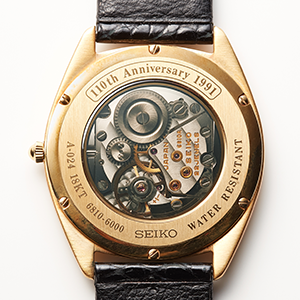The Seiko 68 family of movements is one of my favorites, and I recently added it to the site!
Introduced in 1969 and still in production today, this is a series of ultra-thin hand-winding movements that rival anything in the industry. Measuring just 1.98 mm thick, Cal. 6870 carries on the tradition of the original Cal. 68A. It’s truly a remarkable, hand-made movement!
Although introduced for the “U.T.D.” (“Ultra Thin Dress”) line, these movements are found only in high-end Credor watches today. The original series disappears from Seiko catalogs after 1978 but was resurrected in 1991 to celebrate the company’s 110th anniversary. Two years later, Seiko restarted production of the iconic Cal. 6810 along with the Credor version.
Today there is a whole line of movements in this family, including Cal. 6830, Seiko’s only tourbillon!
Seiko 68 Family
| Calibre | Production | Jewels | Models | Notes |
|---|---|---|---|---|
| 68A | 1969-1972 | 26 | ||
| 6810 | 1973-1978 1991-1998 | 22 | HDF/HTB/ATB/CDF SCVL | Tonneau shape |
| 6830 | 2016-current | 22 | GBCC | Credor tourbillon |
| 6870 | 1993-current | 22 | GBAQ/GCAQ | Credor tonneau |
| 6890 | 2009-current | 22 | GBBY | Credor |
| 6898 | 2005-current | 26 | GBBE/GCBE | Credor small seconds |
| 6899 | 1996-current | 26 | GBBD | Credor skeleton |
Seiko 68 Research Notes
Quite a lot of research went into this series of articles. Although Cal. 6810 is widely celebrated by Seiko (featured on the Credor and Seiko Museum sites), it is not well documented. Some facts (including the re-introduction of the line in 1993 and the launch of Cal. 6870 that same year) were only available in Japanese sources. Other dates and applications were found by researching old Seiko and Credor catalogs.
I am still not sure of the exact date of introduction for Cal. 6810, but the earliest examples I can find date to 1973. The same is true of the modern Cal. 6890 and 6898: I used The Internet Archive to search the Seiko Watches and Credor sites to set their introductions at 2009 and 2005, respectively, but I am not sure about these.
There is remarkably little information available for the original Cal. 68A. In fact, even that name is not widely found in literature! Seiko claims in many sources that it appeared in 1969 in the U.T.D. line but that’s about it. I was skeptical until I found a Japanese auction site with a photo of an actual Cal. 68A movement, complete with “twenty six jewels” written on the bridge. So at least that fact is verified. Seiko catalogs for 1969 through 1972 do list the UTD watch, Ref. 6800. Perhaps this is the cause of the confusion about the calibre number. But these catalogs also specify it as a 22 jewel movement.

The 68A movement actually exists in both 22 and 26 jewel versions – or at least, there are examples with both 22 and 26 jewels engraved on the bridge.
I own an example of this movement complete with dial and handset, but uncased. I suspect it may well be a prototype as I have never seen an example of a watch with this dial, and there is no dial-code. I’ll shoot it this week and post on Instagram (@watchdxb).
Thanks for this! There seem to be examples of both out there, but it’s hard to know for certain. The most interesting thing is that that original movement seems to have almost no application or publicity. Perhaps it really was more of a prototype than a product.